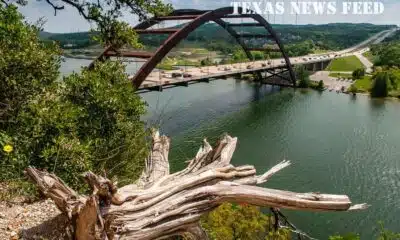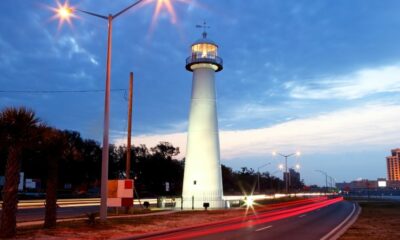News from the South - North Carolina News Feed
‘Lives we lost’ series told the stories of Helene’s victims • Asheville Watchdog
Helene will go down in history not just for the immense damage it caused but also the lives lost – 43 in Buncombe County alone.
That statistic will forever be associated with a disaster once unimaginable for a landlocked, mountainous region.
Like you, we at Asheville Watchdog listened to the news briefings in those early days with deepening distress as the death toll climbed higher and higher. We committed then to tell the stories of those 43 souls, not just how they died but how they lived.
We wanted our community to know the lives we lost.
It was a difficult undertaking – the emotional toll it took on our reporters and photographer, the challenge of finding relatives of the deceased, and the task of simply identifying the dead.
More than 12 weeks after the storm, the North Carolina Department of Health and Human Services, whose medical examiners determine storm-related fatalities, still have not released the names of the deceased.
To find them, I scoured death records on the Buncombe County Register of Deeds website every weekday, opening more than 850 death certificates, one at a time, to find those with “Helene” as a cause.
Only 41 of the 43 death certificates have been filed. NCDHHS will not release the names listed on the other two, citing ongoing death investigations.
The Watchdog’s 10-part Lives We Lost series, which kicked off Oct. 19, not only told the stories of the storm’s casualties; it provided the first accounting of where and how the deaths occurred. We now know that more than half were in two areas of the county – 17 in Fairview and nine in Swannanoa.
Landslides were responsible for most of the deaths, 23, while drowning accounted for 13. Three people died from diseases hastened by the storm, including a cancer patient unable to attend his chemotherapy session, and two from blunt force injuries caused by falling trees.
But most of all, we learned about the lives of our neighbors who perished in harrowing conditions.
Couples gone, families’ losses staggering
Seven married couples died, including Judy Dockery, 64, of Swannanoa, known as “Mama” or “Aunt Judy” who loved serving, cooking and caring for others, and James Dockery, 63, a Buncombe native and preacher who enjoyed making others laugh; Michael Drye, 73, an attorney specializing in family law, and Norah Drye, 73, a devoted mother who along with her husband were leaders at Biltmore Church; and Robert Ramsuer, 70, a Vietnam War veteran who worked in maintenance at Cracker Barrel, and Nola Ramsuer, 70, whose daughter described her as soft spoken and sweet and who enjoyed baking birthday cakes for friends and coworkers.

Four couples were among the victims of the Craigtown landslides in Fairview: Ronald Craig, 68, a retired brick mason who loved hunting, fishing and gardening, and Sandra Craig, 69, a state worker and great cook; Lois Souther, 73, an Asheville native who loved hummingbirds and flowers, and Jimmy Souther, 73, whose passion was working on cars and lawnmowers; Daniel and Evelyn Wright, 82 and 81 and married more than 65 years, who cherished their relatives and church family at Cedar Mountain Baptist Church; and Freddie Pack, 66, an electrician and U.S. Coast Guard veteran who enjoyed the outdoors, and Teresa Pack, 60, a pharmacy technician who loved the Asheville Tourists and taking her grandchildren to Dollywood.
Several families lost multiple relatives. The Dryes’ grandson, Micah, 7, also died when their house along Swannanoa River Road collapsed.
Besides the four couples in Craigtown, who were all related, three others from the same family died in those landslides. Angela Craig, 64, a retired state worker, loved animals, gardening and her family. Tony Garrison, 51 and a battalion chief with the Fairview Fire Department, was described as a humble public servant who enjoyed woodworking, fishing, and his family. His nephew, Robert Brandon Ruppe, 37, had a big heart and could light up a room with his sense of humor.
The other victims of the Craigtown landslides were Chase Garrell, a 28-year-old auto mechanic described as selfless and a loyal friend, and Marsha Ball, 40, who graduated from a program serving students with disabilities and whose hobbies included coloring on her iPad.

Washed away in deadly floodwaters
Rapidly rising floodwaters that spilled over the banks of creeks and the Swannanoa River killed more than a dozen people.
George Dixon, 72, a renowned blacksmith described by fellow artists as among the best in the country, was swept away after a flooding creek tore off the back of his Swannanoa house with him in it.
Lyn McFarland, 68, an outgoing real estate agency owner with a wide circle of friends, was last seen with his beloved dog, Poco, standing on a piece of his riverside home as it bobbed downstream.
Omar Khan and his neighbor, Samira Zoobi, were stranded on a balcony of their apartment complex on River’s Edge Road when the building broke away and spun down the Swannanoa. Khan, 44, a pharmacist and father of two, was described by his wife as compassionate with a pure heart and sense of innocence. Zoobi, 28, a graphic designer at Asheville T-Shirt Co., was described by her best friend as her “confidant, therapist, best advice giver, voice of reason.”
James Harbison, 71, drowned in floodwaters while crossing a creek in Swannanoa to visit a relative. A welder, he loved to sketch cartoon characters and had been a paratrooper in the U.S. Army’s 82nd Airborne Division.
Lisa Plemmons, 52 and a cook at an Asheville nursing home, had been staying in her car at a riverside campground when rising waters swept it away. Plemmons took time off from work to care for sick relatives and loved preparing meals for her extended family.
Norman McGahee, 73, died when water from the river and a creek combined into a torrent and washed away his Swannanoa home. A Vietnam War veteran and Asheville native, he had owned a flooring business, and loved music and the Carolina Panthers.
Kim Kutscher Stepp, 65, drowned when floodwaters swept away her Fairview home. Her grandson survived by clinging to a tree. A Buncombe County native, she worked as an office administrator for Asheville Cardiology and loved Buc-ee’s, her dogs and family.
Gabriel Gonzalez, 52, had gone to work at the Ingles distribution center near the Swannanoa River, where his body was later found. Co-workers called the El Salvador native “the happy one” because he always sang as he loaded tractor-trailers.
Jody Henderson, 63, had rented a cabin at the KOA campground along the Swannanoa with his dog, Bullet, that collapsed in rising water. His sister described him as extremely loving but said he struggled with bipolar disorder and was often homeless.
Calvin McMahan, 63, had been homeless for years and was staying under a bridge near the Swannanoa. The oldest of 10 children and a father of two, he loved to travel and preach to people he met.
John David Keretz, 69, drowned; his body was found near Echo Lake about a mile from his home in Fairview. A financial planner, he was an armed services veteran.
Landslides, falling trees, disease complications
Three people died from landslide injuries, but the circumstances were unavailable.
Patrick McLean, 45, of Black Mountain, enjoyed painting, illustrating and photography and admired global peacekeepers.
Jessica Kirby, 36, also of Black Mountain, was a home health aide and mother of two.
Cathy Jo Blackburn Minish, 52, had gone to Fairview to stay with a friend. Her daughter described her as “really funny and outgoing” and said she loved crafts, travel and trips to the beach.
Two died from falling trees, including Timothy Moore, 60, who had gone to clear one tree on his Woodfin property when another toppled onto him. He was a year from retirement from his job as a deliveryman for Pepsi and loved his motorcycle, the rock band AC/DC and his two daughters, one of whom found his body.
Bobby Stokely, 57, was struck by a falling tree clearing brush in north Asheville a month after the storm. A resident of Maggie Valley, he enjoyed hunting and fishing, John Wayne movies and helping others.
Three died of diseases exacerbated by the storm.
The cause of death for Patricia Radford, 84, was cardiovascular disease with “utilities failure” and Hurricane Helene listed as contributing conditions, according to her death certificate. A former bank manager, she lived in a nursing home and was described as a loving mother and grandmother.
Brian Carter, 78, died of complications from cancer with “inability to attend chemotherapy session” and Helene listed as contributing conditions on his death certificate. Originally from Guyana, he was a self-employed janitor.
Lula Jackson, 63, died from chronic obstructive pulmonary disease with Helene as a secondary cause. A mother of two, she loved her pastor and church, Worldwide Missionary Baptist.
Latest victim: Independent, polite, kind
In all, The Watchdog’s Lives we Lost series profiled 40 of the storm’s victims. Another fatality, that of Sean O’Connor, recently became public with the filing of his death certificate on Dec. 12, more than 10 weeks after the storm.
O’Connor, 64, had been homeless and came to AHOPE day shelter for supplies about once a month, said Alanna Kinsella, homeless services director at Homeward Bound.
“He would ride in on his bike, and we’d get him the supplies he needed, and then we wouldn’t see him again for a while,” Kinsella said.
She described him as independent, resourceful, polite and kind. “He was always willing to share something with somebody, hold the door open, smile, say, ‘Good morning,’ ” Kinsella said.
O’Connor’s body was found the same day, Sept. 30, and at the same location as McMahan’s, along the Swannanoa near the flooded Brother Wolf Animal Rescue. Kinsella believes they had been together.
“Sean was one of those people who really tried to make a minimal impact on the world and just really use what he needed for his survival,” Kinsella said. “He was an amazing human.”
Asheville Watchdog is a nonprofit news team producing stories that matter to Asheville and Buncombe County. Sally Kestin is a Pulitzer Prize-winning investigative reporter. Email skestin@avlwatchdog.org. The Watchdog’s reporting is made possible by donations from the community. To show your support for this vital public service go to avlwatchdog.org/support-our-publication/.
Related
The post ‘Lives we lost’ series told the stories of Helene’s victims • Asheville Watchdog appeared first on avlwatchdog.org
News from the South - North Carolina News Feed
White House officials hold prayer vigil for Charlie Kirk
SUMMARY: Republican lawmakers, conservative leaders, and Trump administration officials held a prayer vigil and memorial at the Kennedy Center honoring slain activist Charlie Kirk, founder of Turning Point USA. Kirk was killed in Utah, where memorials continue at Utah Valley University and Turning Point USA’s headquarters. Police say 22-year-old Tyler Robinson turned himself in but has not confessed or cooperated. Robinson’s roommate, his boyfriend who is transitioning, is cooperating with authorities. Investigators are examining messages Robinson allegedly sent on Discord joking about the shooting. Robinson faces charges including aggravated murder, obstruction of justice, and felony firearm discharge.
White House officials and Republican lawmakers gathered at the Kennedy Center at 6 p.m. to hold a prayer vigil in remembrance of conservative activist Charlie Kirk.
https://abc11.com/us-world/
Download: https://abc11.com/apps/
Like us on Facebook: https://www.facebook.com/ABC11/
Instagram: https://www.instagram.com/abc11_wtvd/
Threads: https://www.threads.net/@abc11_wtvd
TIKTOK: https://www.tiktok.com/@abc11_eyewitnessnews
News from the South - North Carolina News Feed
Family, friends hold candlelight vigil in honor of Giovanni Pelletier
SUMMARY: Family and friends held a candlelight vigil in Apex to honor Giovanni Pelletier, a Fuquay Varina High School graduate whose body was found last month in a Florida retention pond. Giovanni went missing while visiting family, after reportedly acting erratically and leaving his cousins’ car. Loved ones remembered his infectious smile, laughter, and loyal friendship, expressing how deeply he impacted their lives. His mother shared the family’s ongoing grief and search for answers as authorities continue investigating his death. Despite the sadness, the community’s support has provided comfort. A celebration of life mass is planned in Apex to further commemorate Giovanni’s memory.
“It’s good to know how loved someone is in their community.”
More: https://abc11.com/post/giovanni-pelletier-family-friends-hold-candlelight-vigil-honor-wake-teen-found-dead-florida/17811995/
Download: https://abc11.com/apps/
Like us on Facebook: https://www.facebook.com/ABC11/
Instagram: https://www.instagram.com/abc11_wtvd/
Threads: https://www.threads.net/@abc11_wtvd
TIKTOK: https://www.tiktok.com/@abc11_eyewitnessnews
News from the South - North Carolina News Feed
NC Courage wins 2-1 against Angel City FC
SUMMARY: The North Carolina Courage defeated Angel City FC 2-1 in Cary, ending their unbeaten streak. Monaca scored early at the 6th minute, followed by Bull City native Brianna Pinto’s goal at the 18th minute, securing a 2-0 halftime lead. Angel City intensified in the second half, scoring in the 88th minute, but the Courage held firm defensively to claim victory. Pinto expressed pride in the win, emphasizing the team’s unity and playoff ambitions. Nearly 8,000 fans attended. Coverage continues tonight at 11, alongside college football updates, including the Tar Heels vs. Richmond game live from Chapel Hill.
Saturday’s win was crucial for the Courage as the regular season starts to wind down.
https://abc11.com/post/north-carolina-courage-wins-2-1-angel-city-fc/17810234/
Download: https://abc11.com/apps/
Like us on Facebook: https://www.facebook.com/ABC11/
Instagram: https://www.instagram.com/abc11_wtvd/
Threads: https://www.threads.net/@abc11_wtvd
TIKTOK: https://www.tiktok.com/@abc11_eyewitnessnews
-
News from the South - North Carolina News Feed6 days ago
What we know about Charlie Kirk shooting suspect, how he was caught
-
Local News7 days ago
Russian drone incursion in Poland prompts NATO leaders to take stock of bigger threats
-
News from the South - North Carolina News Feed6 days ago
Federal hate crime charge sought in Charlotte stabbing | North Carolina
-
The Center Square7 days ago
Weapon recovered as manhunt continues in Kirk assassination investigation | National
-
Our Mississippi Home5 days ago
Screech Owls – Small but Cute
-
News from the South - Arkansas News Feed6 days ago
NW Arkansas Championship expected to bring money to Rogers
-
News from the South - Alabama News Feed7 days ago
Huntsville Fire & Rescue Holds 9/11 Memorial Service | Sept. 11, 2025 | News 19 at 5 p.m.
-
News from the South - North Carolina News Feed6 days ago
Under pressure, some immigrants are leaving American dreams behind
















































